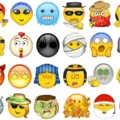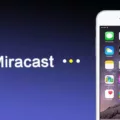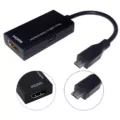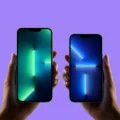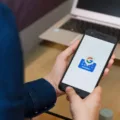Text Messages: The Mystery of Green and Blue Bubbles on Android
In the world of text messaging, you may have noticed that some of your messages appear in green bubbles, while others are in blue. What exactly do these different colors signify? Why are some text messages green and some blue on Android devices? Let’s dive into this intriguing phenomenon and uncover the reasons behind it.
To understand the color difference, we need to explore two types of messaging systems: SMS/MMS and Advanced Messaging. SMS (Short Message Service) and MMS (Multimedia Messaging Service) are the traditional methods of sending text messages, while Advanced Messaging is a newer technology used by certain devices, such as iPhones.
When a message appears in a green bubble, it means it was sent via SMS or MMS. These green messages are ordinary text messages that are typically sent between different platforms or devices. For example, if you are an Android user and your message is being sent to an iPhone user, it will appear as a green bubble. This is because SMS is a universal format that can be received by any mobile device.
On the other hand, if a message appears in a blue bubble, it means it was sent via Advanced Messaging. This blue bubble indicates that the message is using Apple’s proprietary iMessage format, which is exclusive to iPhone users. iMessage allows for more advanced features, such as read receipts, typing indicators, and the ability to send high-quality photos and videos without compression. When you see a blue bubble, it means that the recipient is also using iMessage and can enjoy these enhanced features.
Now, you may be wondering why your messages suddenly switch from blue to green or vice versa. There are a few reasons for this. One possibility is that the recipient’s phone is in airplane mode or switched to an Android device. In such cases, the message will be delivered as an SMS or MMS, resulting in a green bubble. Another reason could be that the recipient has disabled iMessage on their iPhone, forcing the message to be sent as a regular text message.
However, it’s important to note that a sudden switch from blue to green doesn’t necessarily mean you have been blocked. While being blocked is one possibility, it’s not always the most likely explanation. SMS messages that are not delivered usually display a “Message Not Delivered” notification underneath the green bubble, indicating a delivery failure.
The color of text message bubbles on Android devices holds significance in determining the messaging system being used. Green bubbles indicate SMS or MMS messages, while blue bubbles indicate messages sent via Advanced Messaging, specifically iMessage on iPhones. The transition from blue to green can occur due to various reasons, such as different devices, disabled iMessage, or delivery failures. So, the next time you see a green or blue bubble, you’ll have a better understanding of the messaging magic happening behind the scenes.
Why Did My Android Text Messages Turn From Blue To Green?
There could be a few reasons why your Android text messages turned from blue to green. Here are some possible explanations:
1. Message Type: The color of your text messages can change based on the type of message you send. Blue bubbles typically indicate messages sent via Advanced Messaging, which uses an internet connection. On the other hand, green bubbles represent messages sent via SMS (Short Message Service) or MMS (Multimedia Messaging Service), which use your cellular network.
2. Recipient’s Device: The color of your text messages can also depend on the recipient’s device and messaging app. If the person you are texting is using an iPhone or another device that supports Advanced Messaging, your messages may appear in blue. However, if they are using a non-compatible device or messaging app, your messages will show up in green.
3. Network or Internet Issues: Sometimes, network or internet connectivity problems can cause your messages to switch from Advanced Messaging (blue) to SMS/MMS (green). If your internet connection is weak or unstable, your phone may automatically switch to using SMS/MMS to ensure message delivery.
4. Settings Change: It’s possible that you or someone with access to your device accidentally changed the messaging settings. Check your messaging app settings to see if there are any options related to message color or message type. Restoring the default settings may resolve the color change.
5. Software Update: After a software update, some devices may reset certain settings, including messaging preferences. If you recently updated your Android operating system, it could have caused the color change in your text messages.
If you prefer your messages to appear in blue, you can try the following troubleshooting steps:
– Ensure that your device is connected to a stable internet connection.
– Check if there are any updates available for your messaging app or Android system, and install them if necessary.
– Restart your device to refresh the system and messaging settings.
– If the issue persists, you can contact your mobile service provider or check their support resources for further assistance.
Remember, the color of text messages is primarily determined by the messaging app, device compatibility, and network settings.
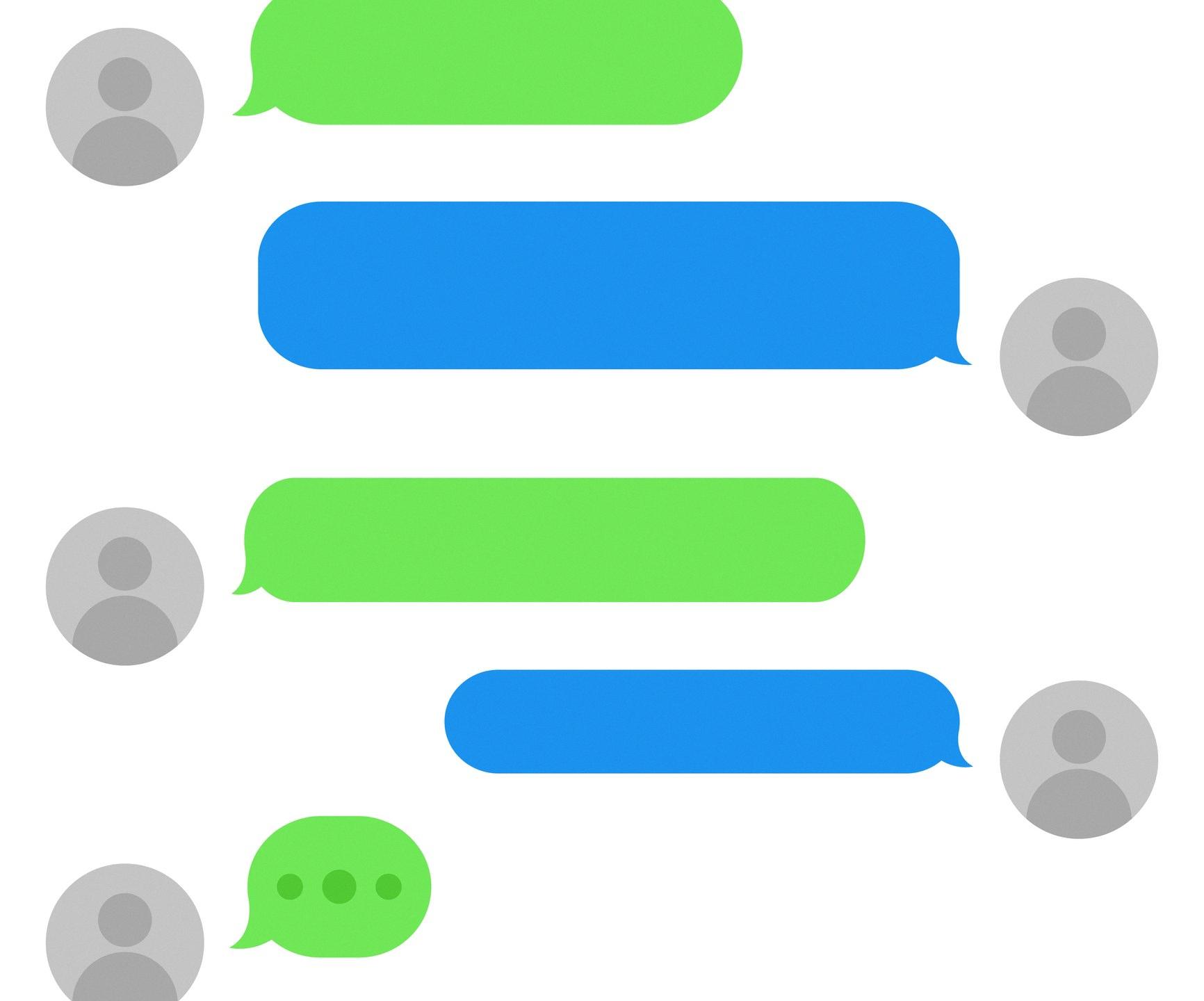
Why Are Some Messages Blue And Some Green On Samsung?
On Samsung devices, the color of the messages can vary between blue and green. This color difference is primarily a result of the messaging format being used.
When messages appear in blue bubbles, it means they have been sent and received using the chat format. This format is typically used when both the sender and recipient are using a messaging app that supports chat features, such as Samsung Messages, WhatsApp, or iMessage on Apple devices. Chat format messages are typically sent over an internet connection, allowing for additional features like read receipts, typing indicators, and the ability to send multimedia files.
On the other hand, messages appearing in green bubbles indicate that they have been sent and received using SMS (Short Message Service) or MMS (Multimedia Messaging Service) format. These messages are sent via cellular networks and do not have the same advanced features as chat format messages. SMS messages are limited to plain text, while MMS messages can include multimedia content such as images, videos, or audio files. Green bubble messages are often sent between different platforms or devices that do not support the chat format.
To summarize, the color difference in messages on Samsung devices is simply a visual indicator of the messaging format being used. Blue bubbles signify chat format messages, which offer more advanced features and are typically sent over an internet connection. Green bubbles represent SMS or MMS format messages, which are sent via cellular networks and have more limited capabilities.
Why Is Text Sometimes Green And Sometimes Blue?
Text messages can appear either green or blue depending on the messaging platform being used. Here are the reasons behind the color variations:
1. Messaging Platform: Green text bubbles typically indicate standard SMS messages sent through cellular networks. These messages are sent as ordinary text messages and do not require an internet connection. Blue text bubbles, on the other hand, are specific to Apple’s iMessage platform, which uses an internet connection to send messages between Apple devices.
2. Internet Connectivity: To use iMessage and send messages with blue bubbles, both the sender and receiver need to have an active internet connection, either through mobile data or Wi-Fi. If either party has poor or no internet connectivity, the message may revert to a standard SMS message, indicated by a green bubble.
3. Apple Devices: iMessage is exclusive to Apple devices such as iPhones, iPads, and Macs. When two Apple devices communicate with each other, the messages are sent through iMessage, and the bubbles appear in blue. If you are messaging someone with a non-Apple device, or if iMessage is disabled on their Apple device, the messages will be sent as SMS and appear in green.
4. Features and Benefits: iMessage offers additional features like read receipts, typing indicators, message effects, and the ability to send photos, videos, and documents with ease. These features are only available when both parties are using iMessage, and hence the messages appear in blue.
5. Blocked Contacts: Although not definitive, if you usually see blue bubbles when messaging someone and suddenly notice green bubbles, it could indicate that the person has blocked you on their device. However, the color change alone is not a conclusive sign of being blocked, as other factors like internet connectivity or temporary issues can also cause the change.
The color of text messages can vary between green and blue depending on the messaging platform, internet connectivity, devices used, and whether iMessage is enabled. Green bubbles typically indicate standard SMS messages sent through cellular networks, while blue bubbles are specific to iMessage on Apple devices, offering additional features and benefits.
Does Green Text Mean Blocked Android?
The color of the text in a messaging app can sometimes indicate whether a message has been delivered or if you have been blocked. In the context of Android devices, a sudden switch from blue (which indicates an iMessage, typically sent between Apple devices) to green (which indicates a regular SMS or MMS message) could be a sign that you have been blocked by the recipient.
However, it’s important to note that a switch from blue to green alone is not a definitive indicator of being blocked. There could be other reasons for the change in color, such as the recipient’s phone being in airplane mode, their iMessage service being temporarily unavailable, or if they have switched to an Android device.
To determine if you have been blocked, you should look for other signs along with the change in text color. Some additional indicators include:
1. Delays in message delivery: If your messages consistently take a long time to be delivered or are not delivered at all, it could be a sign that you have been blocked.
2. No response or engagement: If the recipient used to respond to your messages promptly but suddenly stops, it could indicate that they have blocked you.
3. Call goes straight to voicemail: If your calls to the person go directly to voicemail without ringing, it might suggest that you have been blocked.
4. Profile picture and status changes: If you can no longer see the recipient’s profile picture or their status updates, it could be an indication that you have been blocked.
It’s important to keep in mind that these signs are not foolproof and there could be other reasons for the observed behavior. The only way to confirm if you have been blocked is to directly communicate with the person through alternative means or ask a mutual contact.
A switch from blue to green text alone does not necessarily mean you have been blocked on an Android device, but when combined with other signs like message delivery issues, lack of response, or changes in profile visibility, it could indicate that you have been blocked.
Conclusion
Text messages are a widely used form of communication that allows people to send and receive messages quickly and conveniently. There are different types of text messages, including SMS, MMS, and advanced messaging, each with its own features and characteristics. Green bubbles indicate messages sent via SMS or MMS, while blue bubbles indicate messages sent via advanced messaging or iMessage. Green bubbles are ordinary SMS text messages, while blue bubbles are using Apple’s proprietary iMessage format.
When it comes to interpreting the meaning behind message bubbles, it’s important to consider various factors. A sudden switch from blue to green could simply mean a user has their phone in airplane mode or switched to an Android device. However, it could also indicate that the user has blocked the recipient, although this is not always the case. If a message is not delivered, it will usually display a “Message Not Delivered” notification underneath the green bubble.
Understanding the different types of message bubbles and their implications can help in interpreting the nature of communication and potential issues, such as being blocked or messages not being delivered. It’s important to consider other factors and context when trying to determine the meaning behind message bubbles, as there can be various reasons for the change in color or delivery status.

